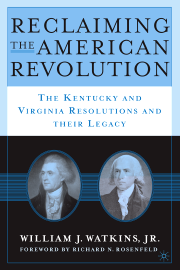Senate hearings on Solicitor General Elena Kagan’s nomination to the Supreme Court are scheduled to begin next week. During the debate, Americans will hear the usual talking heads discussing the need for civility. The system would work so much better, we will be told, if debate participants would follow the Golden Rule.
Although it is true that the nomination process in recent decades has become more heated, it has little to do with a generic decline of civility. It has everything to do with the role claimed by the modern Supreme Court.
At one time the federal courts were neutral umpires ensuring that all sides played by the same rules. Now, the Supreme Court has become the ultimate policymaker in the United States. The nine justices are not umpires, but participants in the legislative process.
As a recent example, in Graham v. Florida, decided just last month, the court held that a juvenile offender cannot be sentenced to life in prison without parole for a crime other than homicide. The court disregarded that young offenders who commit brutal crimes and have lengthy criminal histories are dangerous to society. Unabashedly, the court stated that in its own “independent judgment” such a punishment was excessive for juveniles.
In other words, the court admitted to weighing policy considerations when reviewing the Florida statute. Because the court disagreed with the policy decisions of Florida’s elected lawmakers, it overturned the state’s decision to abolish parole.
So much for Alexander Hamilton’s prediction in Federalist No. 78 that the judiciary would be the “least dangerous” branch of government.
If the court insists on making policy, then the people ought to have a greater voice in the selection of justices. Nomination by the president with the advice and consent of the Senate, while perhaps appropriate in choosing an umpire, is not suited for choosing an official with veto power over rational policy decisions.
I suggest that the Constitution’s current selection method be amended as follows. Upon the existence of a vacancy on the Supreme Court, the president, the House majority leader, and the House minority leader each submit the name of a candidate to fill the vacancy.
The three nominees (it could be two or one depending on the political climate) would be listed on the ballot for the next regularly scheduled federal election (every two years), and the people would vote for one of the nominees to serve on the Supreme Court.
The nominee with a plurality of votes (in cases of three nominees) or a majority of votes (in case of fewer than three nominees) assumes the vacant seat on the High Court.
Typically, this system would result in two names offered to the people as nominees for the open slot. The party controlling the White House will likely submit a single candidate.
Strategically, President Obama and House Majority Leader Steny Hoyer would not want two Democrats on the ballot to compete for votes against a solitary Republican.
However, this system would ensure that if a president is wedded to cronyism (George W. Bush and Harriet Meyers come to mind), his party in the House would have an opportunity to offer the people a better qualified choice to serve on the court.
The end result is that the people would have some say in who wields ultimate federal judicial authority that is scarcely distinguishable from traditional legislative authority. If the court insists on making policy, then its prospective members should appear on the ballot just like the president, senators and representatives.











